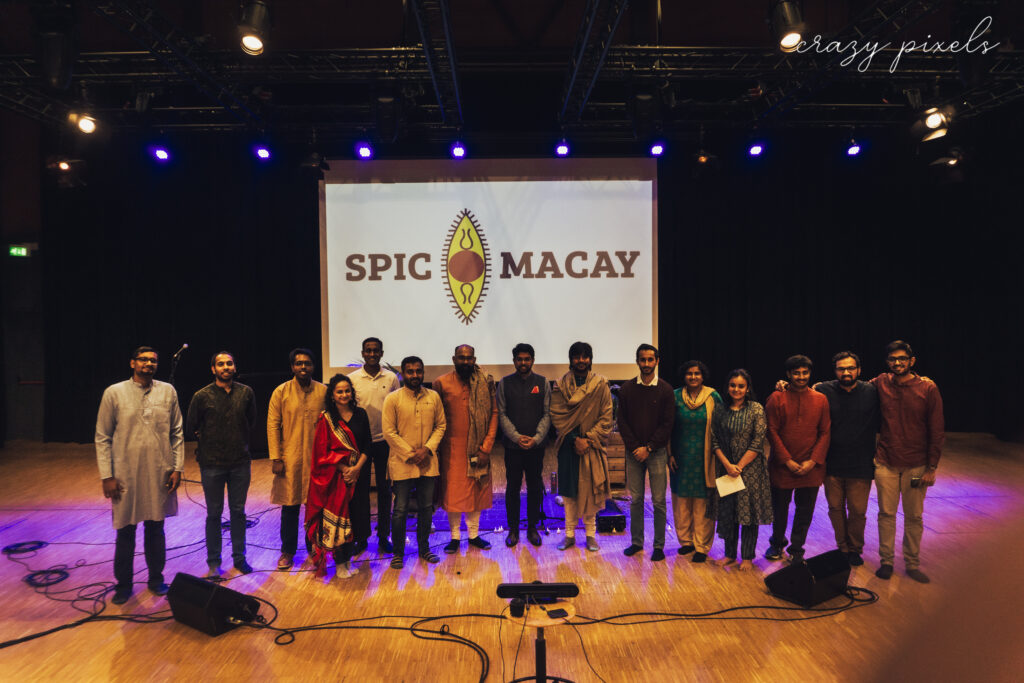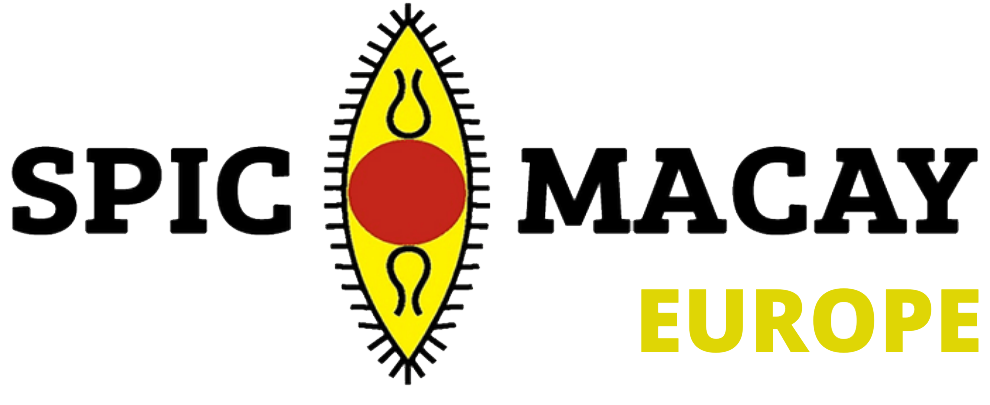
On 12th November 2023, for the second time in just six months, the theatre hall at X TU Delft saw a concert of Indian music organised by SPICMACAY Netherlands. This time, it was a Karnatik music concert, with J. A. Jayant playing the flute and K. Sai Giridhar playing the mridangam.
The first composition was Tyagaraja’s ‘Banturiti‘ in Adi talam. It was a lively beginning, and heralded a concert of janya ragas. This, a janya of Neetimati, was followed by a janya of Mayamalavagaula. Jaganmohini was marked by a measured ‘Sobhillu Saptaswara‘ in Rupaka talam, also a composition of Tyagaraja. The hall was packed, with plenty choosing to remain seated on the floor when there were no more seats left.
Before the main piece, Jayant spent a few minutes explaining the role and the broad structure of a main piece in a Karnatik concert and mentioned the variety of languages in which Karnatik music compositions exist. The raga chosen was Madhyamavati – a last minute decision as we found out later. A gentle but quick alapanai led into the composition, Papanasam Sivan’s ‘Saravanabhavaguhane‘ – a Tamil song after two Telugu songs. This was rendered in detail and marked by a series of intricate melody-rhythm exchanges between the flute and the mridangam. Just when we all thought it couldn’t get more intricate, Sai Giridhar launched into a percussion solo and showed the audience the grandeur of the mridangam.
The last raga in the concert was Sindhu Bhairavi. A brief alapanai was followed by Purandara Dasa‘s ‘Tamburi Meetidava‘ in Kannada, a very appropriate song for a SPICMACAY concert. After all, what better song than one which speaks of the benefits of music, for an event organised by a society that promotes music? ‘Tamburi Meetidava‘ was immediately followed by a rousing rendition of ‘Jo Bhaje Hari Ko Sada‘, ending in a crescendo that brought the audience to their feet in a standing ovation.
After the concert, the floor was opened to the audience for questions. The first question was – rather unsurprisingly – “Could you play one more song please?”. This might have felt like a strange question but to me, there was nothing strange about wanting to listen to more music especially after such a delightful concert! The raga chosen was Kalyani, and the artists obliged with a joyous rendition of Tyagaraja’s ‘Vasudevayani‘.
Jayant then spoke about the instrument itself. He began by explaining that bamboo flutes are known as Venu in South India and Bansuri in North India, regardless of size. He then went on to explain that the size affects mainly the tonality and the octave, with the ‘Sa’ remaining the same across different flutes. He demonstrated this by playing notes and melodies on the different flutes, picking up the notes on each flute where he stopped on the previous one. After demonstrating the double bass flute or the Shankh Bansuri, he spoke about using different flutes to widen the range of octaves that can be played. Towards the end, he highlighted the importance of choosing an octave and a flute that is appropriate for the raga and the composition. It brought home the importance of making mindful decisions even in a world of music where anything might be possible.
And with the end of the demonstration, much as we wished it wouldn’t, the evening came to an end.
Mythili D K
Delft, The Netherlands

Leave a Reply
You must be logged in to post a comment.